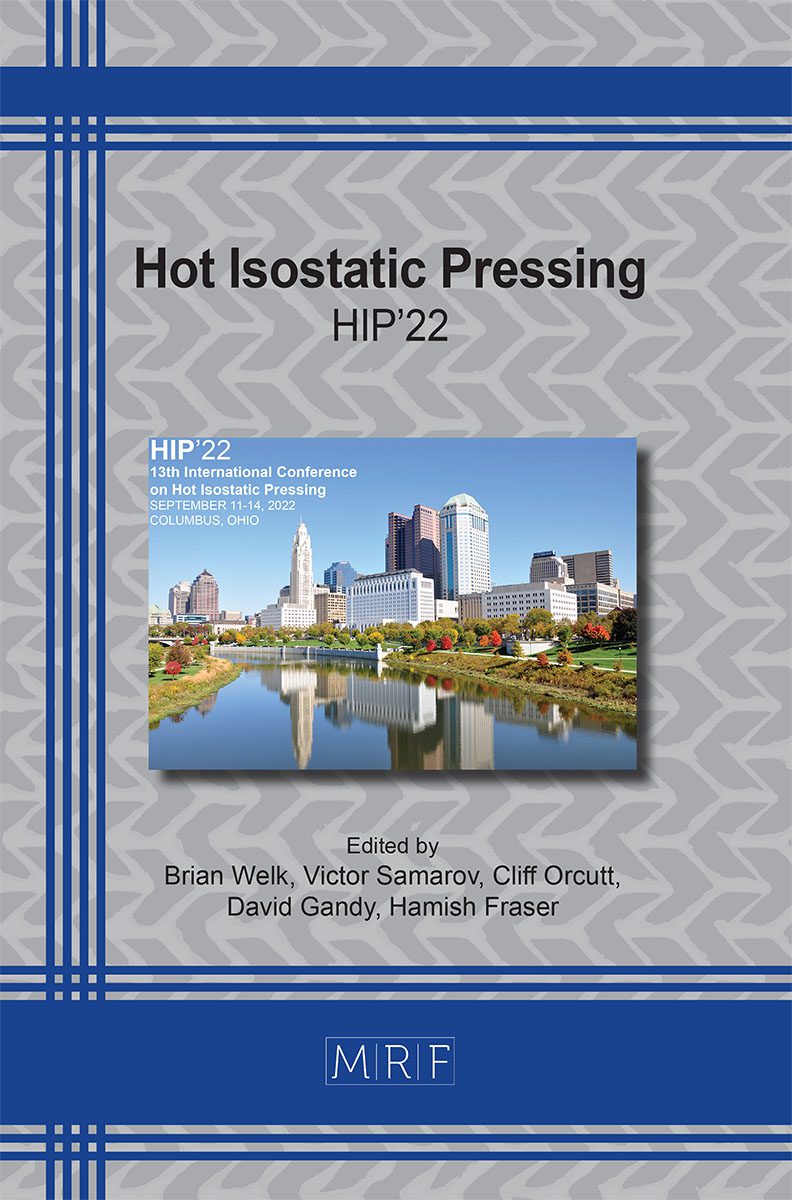Comparison of HIP Composite and HIP Solid Material with Melting Metallurgically Produced Solid Material
Alexander Ernst, Beat Hofer, Adem Altay, Michael Hamentgen
download PDFAbstract. The production of composite materials using Hot Isostatic Pressing (HIP) technology is finding more and more applications. Composite parts for co-rotating twin screw extruders have been introduced in practice for years and are indispensable. Further applications in the roller sector for the processing of high-quality sheet metal and wood pellet production contribute to quality improvement and service life extension and can be tailored precisely to the demands. Composite material is particularly advantageous for large dimensions. Requirements such as high hardness in the rim zone and high strength in the load-bearing core can be combined with different materials. In the present work, HIP composite materials and HIP solid materials were compared with melting metallurgically produced solid materials. The differences in hardness and strength in the rim zone and in the core after heat treatment are presented, showing the advantages and disadvantages of both systems. The choice of composite material depends on the requirements and can cover contrary needs such as corrosion, wear resistance and high strength.
Keywords
Hot Isostatic Pressing, Powder Metallurgy, Melting Metallurgy, Composite Material, HSS, Twin Screw Extruders, Rollers, Pellet Mills, Mechanical Properties, Quality Improvement, Service Life Extension
Published online 12/8/2023, 10 pages
Copyright © 2023 by the author(s)
Published under license by Materials Research Forum LLC., Millersville PA, USA
Citation: Alexander Ernst, Beat Hofer, Adem Altay, Michael Hamentgen, Comparison of HIP Composite and HIP Solid Material with Melting Metallurgically Produced Solid Material, Materials Research Proceedings, Vol. 38, pp 91-100, 2023
DOI: https://doi.org/10.21741/9781644902837-14
The article was published as article 14 of the book Hot Isostatic Pressing
![]() Content from this work may be used under the terms of the Creative Commons Attribution 3.0 license. Any further distribution of this work must maintain attribution to the author(s) and the title of the work, journal citation and DOI.
Content from this work may be used under the terms of the Creative Commons Attribution 3.0 license. Any further distribution of this work must maintain attribution to the author(s) and the title of the work, journal citation and DOI.
References
[1] C. B. Boyer, Historical Review of HIP equipment, in: Hot Isostatic Pressing – Theory and applications, Proceedings of the 3rd International Conference on Hot Isostatic Pressing, Osaka, 1991, pp. 465-510. https://doi.org/10.1007/978-94-011-2900-8_68
[2] The Evolution of HIP – Commemorating the First Hot and Cold Isostatic Pressing Vessels, The American Society of Mechanical Engineers, 1985
[3] Introduction to Hot Isostatic Pressing technology – A guide for designers and engineers, European Powder Metallurgy Association, 1st Edition, 2014
[4] F. X. Zimmerman, HIP Equipment for Industrial Applications, in: High-Pressure Science and Technology. Springer, Boston, MA, 1979, pp. 1711–1717. https://doi.org/10.1007/978-1-4684-7470-1_209
[5] B. Hofer, A. Altay, M. Hamentgen, A. Schütz, Hot isostatic pressing and its applications, in: Proceedings of the 4th ESTAD, Düsseldorf, 2019
[6] H. Winkler, Einfluss der Pulverfraktion auf die mechanischen Eigenschaften von pulvermetallurgisch hergestelltem Schnellarbeitsstahl, Diploma thesis, Montanuniversität Leoben, 2007
[7] B. Hofer, F. Bigolin, M. Hamentgen, H. Stremming, C. Zühlke, Measuring the gas content in HIP components and impurities in the argon- and chemical reacted gas used to compacting near netshape parts and castings. Presentation of the measurement technique, in: Proceedings of the 11th International Conference on Hot Isostatic Pressing, Stockholm, 2014
[8] DIN EN ISO 3327:2009: Hardmetals – Determination of transverse rupture strength, Beuth Verlag, Berlin, 2009












